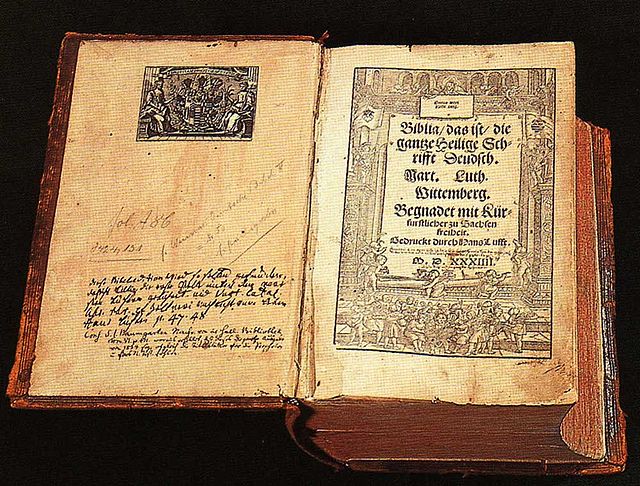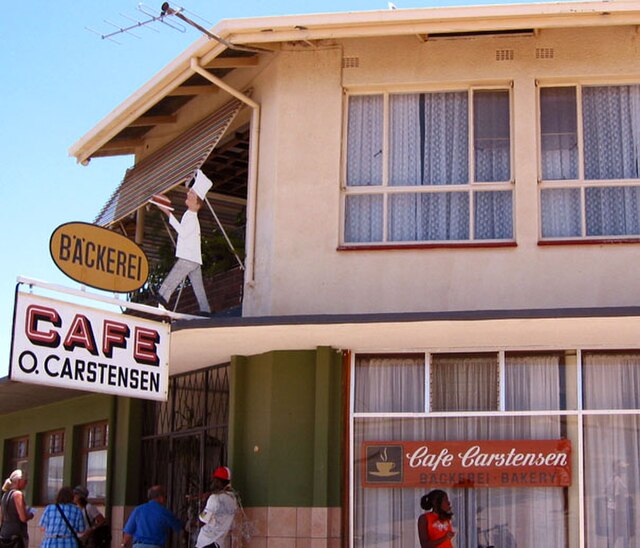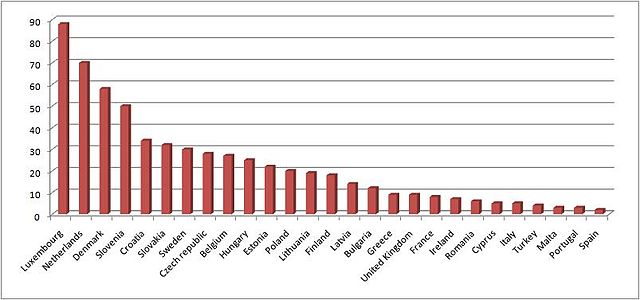Early New High German (ENHG) is a term for the period in the history of the German language generally defined, following Wilhelm Scherer, as the period 1350 to 1650.
The opening page of the Book of Genesis in Martin Luther's Bible translation of 1534, published by Hans Luft
The diphthongization of long vowels in ENHG
German is a West Germanic language in the Indo-European language family, mainly spoken in Western and Central Europe. It is the most widely spoken and official or co-official language in Germany, Austria, Switzerland, Liechtenstein, and the Italian province of South Tyrol. It is also an official language of Luxembourg and Belgium, as well as a recognized national language in Namibia. There further exist notable German-speaking communities in France (Alsace), the Czech Republic, Poland, Slovakia, Denmark, Romania and Hungary (Sopron).
Modern High German translation of the Christian Bible by the Protestant reformer Martin Luther (1534). The widespread popularity of the Bible translated into High German by Luther helped establish modern Standard German.
Bilingual German-English sign at a bakery in Namibia, where German is a national language
Self-reported knowledge of German as a foreign language in the EU member states (+Turkey and UK), in per cent of the adult population (+15), 2005
Swiss German restaurant sign in Andermatt: "Chuchichäschtli", in Standard German "Küchenkästlein"






